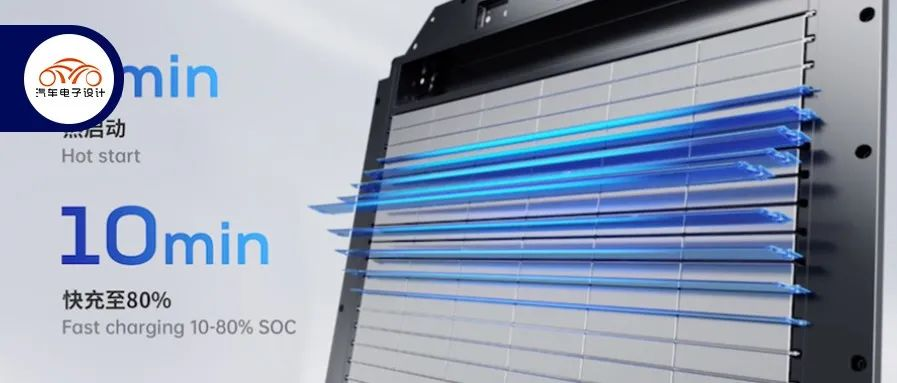Author: Zhū Yùlóng
The Kirin battery of CATL has been delivered on schedule, and it will be equipped on the pure electric mid-to-large MPV product, the Jikr 009, from Zeekr New Energy. What interests me here is:
-
Standard version: 116 kWh / 702 km
-
High-end version: 140 kWh / 822 km
Compared with CATL’s own Aivita battery (with a capacity of 90-116 kWh), Kirin battery has taken another step forward. This battery adopts high-nickel and silicon-rich cathode materials, and has a high level of cell-to-pack integration. The fundamental difference here lies in the fact that NING WANG (CATL’s old brand) was mainly using ternary CTP technology before, which does not use high-nickel formulas and mainly uses NCM chemistry.

The Design of Kirin Battery
Based on the third-generation CTP (cell to pack) technology released by CATL, the Jikr 009 ME equipped with the Kirin battery has a pure electric range of 822 km. Jikr New Energy also made a big fuss about the innovation in cathode material, which uses high-nickel ternary materials on the positive electrode and silicon-based negative electrode on the negative electrode. However, silicon-based materials have problems such as significant volume expansion during lithiation, poor conductivity, low initial coulombic efficiency, and cycling performance. The solution includes nanomaterials and carbon coating but it is difficult to manufacture. Despite this, it was still used to achieve a higher capacity.
From the current design, the main difference from Aivita CTP2.0 to CTP3.0 lies in the integration of the previously separate components (i.e. crossbeam, water cooling plate, and thermal insulation pad) into a multifunctional elastic interlayer. The electric cells are bundled into one group of energy structural blocks through the water cooling plate. The main difference between them is:
- Energy Density Orientation: This is based on the 400/800V system. Since Zeekr has not put too much emphasis on it, the battery is more focused on two power demands of 116 kWh and 140 kWh.- Focus on fast charging speed: it is clear that it is moving towards 800V and fast charging. This design has not been officially seen yet.

The long endurance brought by the high energy density of the batteries currently released, on the fast charging of the batteries, the Kirin battery of Jiuke 009 uses the fast ion ring, the super electron net, and the superconductive electrolyte technology and improves heat dissipation to overcome the bottleneck of fast charging of the batteries in the past. According to Liu Changyan’s introduction, Kirin battery’s globally-first electrode large-area cooling technology places the traditional water-cooling component set at the bottom between the cells, enlarges the heat exchange area four times, and shortens the cell temperature control time to half of what it was previously, only 28 minutes from 10% SOC to 80% charged. If estimated according to this rate, it is approximately a fast charging speed of 2C.

Safety
The unique feature of the Kirin battery design is its reliance on electrode large-area cooling technology, which can rapidly cool the cells in extreme conditions, effectively blocking abnormal heat transfer between cells. The Jiuke 009 Kirin version is equipped with Ningde Times’ latest NP 2.0 technology, which pioneered smoke and high voltage active isolation design, completely eliminating the hidden danger of high voltage arc ignition caused by high temperature smoke. That is to say, there are currently various NP technologies available:
◎NP1: This is the classic design we have seen, and there have been many analyses of it.
◎NP2: This generation of design has upward electrical connections and downward emissions.
◎NP3: This design has already taken into account space structure optimization, and the arrangement of the cells adopts an inverted arrangement, allowing multiple modules to share the bottom space, and distributing the functions of structure protection, high voltage connection, and thermal control venting intelligently. How effective this is remains to be seen.
 “`
“`
In the current bottom design, when encountering bumpy roads or sudden obstacles, there may be actual driving scenarios where the battery is bumped. To reduce the risk of battery bottom bumping, high-strength profiles are used in combination with sheet metal steel. Therefore, we currently see several designs:
-
Aluminum casing: integrated with a water-cooled plate inside the casing, this is the MEB route. The advantage is that there is plenty of space at the bottom, but the disadvantage is that a lot of thermal conductive adhesive is needed.
-
Aluminum casing with steel bottom guard plate: uses an aluminum casing as the design, with a steel plate added to the bottom.
a. Variant: Here we see some companies incorporating elastic materials to absorb deformation.
- Steel casing: this is the way that Universal Otten Energy takes. I appreciate this kind of simple and straightforward method.

Summary: I am very excited about this battery pack. It is said to have been originally backup for NIO. Let’s wait and see the semi-solid effect of NIO.
“`
This article is a translation by ChatGPT of a Chinese report from 42HOW. If you have any questions about it, please email bd@42how.com.
